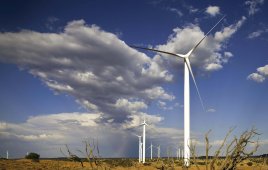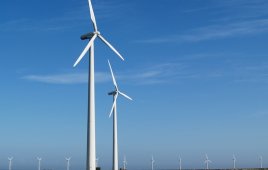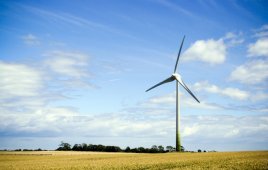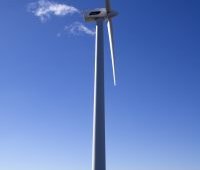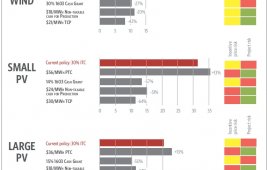The ambitious Paris Agreement reached at the recent United Nations’ 21st Conference of the Parties (COP21), which ultimately aims to limit the increase in global average temperatures to below 1.5 Celsius degrees from pre-industrial levels, will require substantial efforts from its signatories if the desired results are to be achieved, says an analyst with research and consulting firm GlobalData.
Industry grows as policy uncertainty threatens future gains
With over 1,600 MW of new wind capacity installed during the third quarter of 2015, and nearly 3,600 MW installed in all of 2015, wind power continues to gain strength. The release of the American Wind Energy Association’s (AWEA) U.S. Wind Industry Third Quarter 2015 Market Report shows the market for low-cost wind energy continues to…
Government policies will remain key to Europe’s renewable energy growth thru 2020
Renewable energy support methods, such as Feed-in Tariffs (FIT), quota obligations, capital grants, and subsidies, will continue to be instrumental in promoting Europe’s renewable energy industry growth by 2020, according to research and consulting firm GlobalData. The company’s latest report states that of the various support mechanisms in Europe, FIT’s have emerged as a particularly…
Officials highlight need for stable policy to continue growing wind energy
Secretary of Energy Ernest Moniz emphasized the need for stable policy for wind energy as the U.S. Department of Energy (DOE) released data showing the cost of wind energy has fallen by nearly two-thirds over the last six years. “With declining costs and continued technological development, these reports demonstrate that wind power is a reliable…
American wind power at “transformational point in time” as industry attempts to meet Wind Vision
Coming off a year in which the industry added 23,000 jobs and put $23 billion of private investment behind 100 wind projects, new AWEA Board Chair Mike Garland declared it’s time for the industry to start flexing its muscle. “From the smallest companies to the largest, we have a shared responsibility to make this vision…
Federal renewable policy changes could add up to tax savings
Federal government support has been crucial to growth in the solar and wind industries, and a new report by Climate Policy Initiative (CPI), “Supporting Renewables while Saving Taxpayers Money,” shows the government could sustain that support at much lower cost to taxpayers by replacing current tax credits with cash incentives. For example, a taxable cash…
What to do when your turbine warranty expires
Looming deadlines of expiring turbine warranties have project owners taking stock of options and planning their next steps. Lender requirements, project lifespan, and maintenance concerns are just a few factors owners must consider. The good news is that there are more options available than ever before. Project owners usually consider a third-party warranty, an OEM’s…
What are the legal issues in windpower?
These issues encompass much of what happens in the renewable-energy industry. Due to an increased value placed on wind, recent legal issues have emerged regarding wind rights. One legal expert says that, like many new developments, technology often progresses faster than the law. Some believe officials need to adopt legal changes to adapt to new…
Who owns the IP funded by government grants?
Carey C. Jordan, Partner, McDermott Will & Emery, www.mwe.com A recent case concerning intellectual property (IP) rights serves as a cautionary tale to researchers and inventors in the wind industry. Although the case centers around a Stanford University researcher and several patents he authored concerning HIV nucleic acid measurement, it is useful to the wind…
Is the U.S. Wind Industry Losing Ground?
We’ve all read the news that the United States has, after four years of remarkable growth, relinquished its’ position as the most attractive country for renewable energy investments. But rather than state the news, I want to discuss why we are slowly slipping behind our foreign competitors. One key factor in the U.S. decline is…


